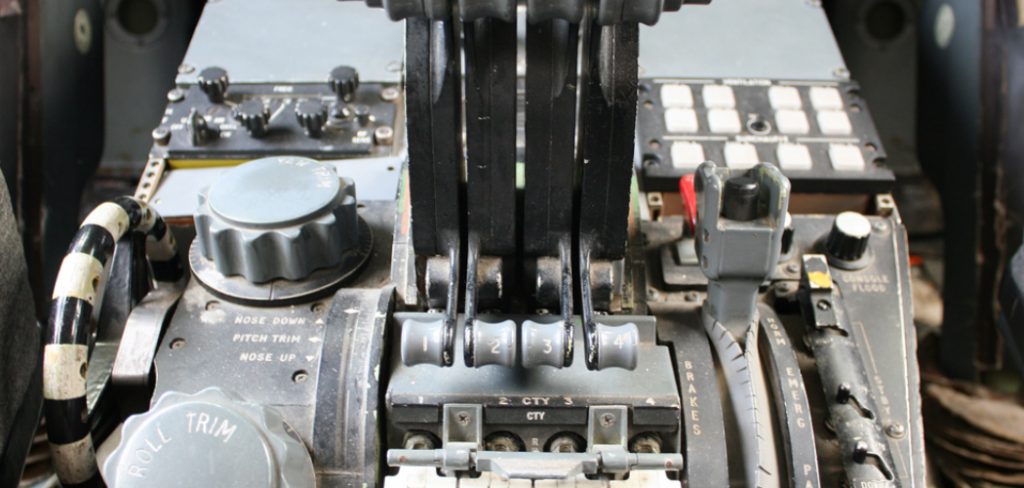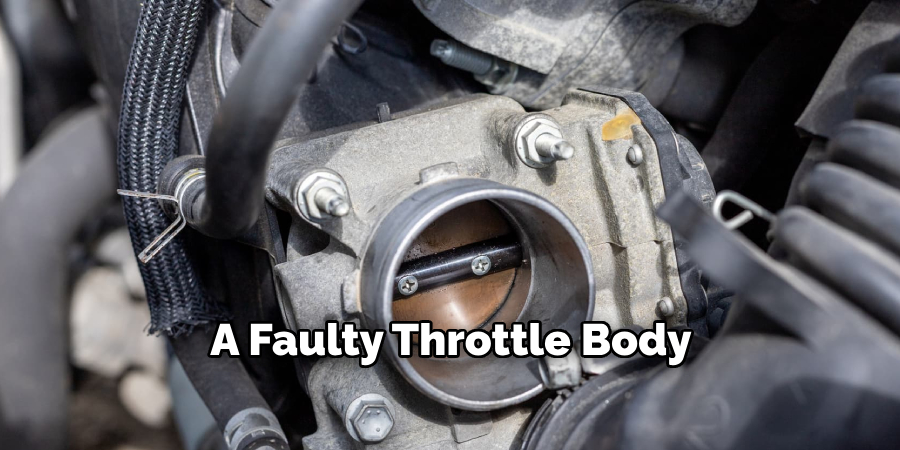The throttle body is a crucial but often overlooked component of any combustion engine. As the gateway that controls the amount of air entering the engine, a well functioning throttle body is essential to getting the most power and fuel efficiency out of your vehicle. However, over time environmental factors like heat, dust, and contaminants can slowly degrade a throttle body’s performance.

Have you noticed your car feeling sluggish or not accelerating as quickly as it used to? One relatively easy fix is to replace the throttle body with a new, clean unit. In this blog post, I will walk through the step-by-step process of how to change throttle body. By following along, you’ll be able to breathe new life into your vehicle’s performance and economy. Let’s get started!
Why May You Want to Change Throttle Body?
1 . To Improve Engine Performance
The throttle body is an essential component of the engine that controls the amount of air that flows into the engine. It works by regulating the mixture of air and fuel that enters the engine, which in turn affects its performance.
Over time, the throttle body can become dirty or damaged, resulting in poor engine performance and decreased fuel efficiency. Changing it out for a new one can help improve the engine’s performance and restore its power.
2 . To Address Stalling or Idling Problems
A faulty throttle body can also cause stalling or idling problems, where the engine may stop running or struggle to maintain a consistent idle speed. This can be due to a buildup of carbon deposits on the throttle body, which affects its ability to open and close properly. Changing the throttle body can help eliminate these issues and improve the overall functioning of the engine.
3 . To Solve Acceleration Issues

If you notice that your vehicle is not accelerating as it should, it could be due to a faulty throttle body. A defective throttle body can lead to a delay in acceleration or uneven power delivery, making driving your vehicle a frustrating experience. Changing the throttle body can solve these issues and provide a smoother and more responsive driving experience.
4 . To Save Money in the Long Run
Ignoring a faulty or dirty throttle body can lead to further damage to other engine components, such as spark plugs and oxygen sensors. This can result in costly repairs down the line. By changing the throttle body as soon as you notice any problems, you can save money in the long run by preventing further damage to your engine.
5 . To Ensure Safe Driving
A malfunctioning throttle body can also affect the overall safety of your vehicle. If it is not functioning correctly, it could lead to unexpected changes in speed or even sudden stalling while driving. This can put you and other drivers at risk on the road. By changing the throttle body, you can ensure that your vehicle is functioning properly and safely.
How to Change Throttle Body in 5 Easy Steps
Step 1: Gather All Necessary Tools and Materials
Before beginning the process of changing your throttle body, it is important to gather all the necessary tools and materials. Some common tools that may be required include a socket wrench set, screwdrivers, pliers, and a new gasket for the throttle body. Make sure to also have any specific tools recommended by your vehicle’s manufacturer.
Step 2: Disconnect the Negative Battery Cable
It is important to disconnect the negative battery cable before beginning any work on your vehicle. This will help prevent any electrical shocks or damage to sensitive components while working on the throttle body.
Step 3: Locate and Remove the Throttle Body

The throttle body is usually located near the engine’s air intake manifold. Refer to your vehicle’s manual for the exact location. Once located, use your tools to carefully remove any bolts or screws securing the throttle body in place. You may also need to disconnect any electrical connections or vacuum lines attached to the throttle body.
Step 4: Clean and Check the Throttle Body
After removing the old throttle body, take a moment to clean it thoroughly using a specialized throttle body cleaner. This will help remove any built-up carbon deposits or debris that may be hindering its performance. While cleaning, also check for any signs of damage such as cracks or excessive wear and tear.
Step 5: Install the New Throttle Body and Reconnect Everything
Carefully install the new throttle body into place, making sure to properly align it with the air intake manifold. Reattach any bolts, screws, electrical connections, and vacuum lines that were removed earlier. Once everything is securely in place, reconnect the negative battery cable and start your vehicle to test its performance.
Remember to always consult your vehicle’s manual for specific instructions and safety precautions before attempting to change the throttle body yourself. If you are uncomfortable with performing this task, it is always best to seek professional help from a certified mechanic.
Overall, changing the throttle body can be a simple and cost-effective way to improve your vehicle’s performance and should be done regularly as part of routine maintenance.
Some Extra Tips to Change Throttle Body

1 . Do Not Ignore Warning Signs
Before you even plan on changing the throttle body, it is important to not ignore any warning signs. This could be anything from a check engine light to unusual noises or vibrations coming from your car. Ignoring these signs can lead to further damage and potentially more expensive repairs.
2 . Gather All Necessary Tools
Before starting the process of changing the throttle body, make sure you have all the necessary tools handy. This includes a socket wrench set, screwdrivers, pliers, and any other specific tools that may be required for your particular car model.
3 . Disconnect Battery
To ensure safety while changing the throttle body, it is important to disconnect the battery before starting any work. This will prevent any potential electrical shocks and also allow you to work without any interference from the car’s electronic systems.
4 . Clean Throttle Body
Before installing the new throttle body, it is important to clean the area thoroughly. This will remove any dirt or debris that could potentially affect the performance of your new throttle body.
5 . Replace Gaskets and Seals
While changing the throttle body, it is a good idea to also replace the gaskets and seals. These can wear out over time and may lead to leaks or other issues if not replaced.
6 . Follow Manufacturer’s Instructions
Each car model may have its specific instructions for changing the throttle body. It is important to follow these instructions carefully to ensure proper installation and avoid any potential damage.
7 . Test and Adjust
Once the new throttle body is installed, it is important to test and adjust it as necessary. This may involve calibrating the idle speed or performing a throttle position sensor relearn procedure.
Frequently Asked Questions

What Precautions Should I Take Before Changing Throttle Body?
Before changing the throttle body, it is important to ensure that the engine has cooled down. This will prevent any potential burns or injuries. Additionally, make sure to disconnect the battery and remove any debris or dirt around the throttle body area.
How Often Should I Change Throttle Body?
Throttle bodies do not typically need to be changed unless they become damaged or worn out. However, it is important to regularly inspect and clean the throttle body as part of routine vehicle maintenance.
Can I Change my Throttle Body Myself?
Yes, you can change the throttle body yourself if you have the necessary tools and knowledge. However, it is recommended to consult a professional mechanic for complex procedures or if you are unsure about the process.
What Tools Do I Need to Change Throttle Body?
The tools required to change the throttle body may vary depending on your vehicle’s make and model. However, some common tools that may be needed include a socket wrench, screwdriver, pliers, and cleaning supplies.
How Long Does It Take to Change Throttle Body?
The time it takes to change the throttle body may vary depending on your vehicle’s make and model, as well as your level of experience. It can take anywhere from 30 minutes to a few hours, so it is important to allocate enough time for the job.
Conclusion
Now you know how to change the throttle body. In conclusion, changing the throttle body is not a complicated task but it does require some knowledge and attention to detail. By following these tips and the manufacturer’s instructions, you can successfully change your car’s throttle body and improve its performance.
Remember to always prioritize safety and don’t hesitate to seek professional help if needed. Keep your car running smoothly by staying attentive to any warning signs and performing regular maintenance. Happy driving!

About
JeepFixes Team is a skilled author for Jeep Fixes, bringing 6 years of expertise in crafting a wide range of jeep fixes. With a strong background in jeep fixes work, JeepFixes Team’s knowledge spans various types of fixtures, from decorative pieces to functional hardware, blending precision with creativity. His passion for jeep fixes and design has made him a trusted resource in the industry.
Professional Focus:
Expert in Jeep Fixes : JeepFixes Team aesthetic specializes in creating durable and innovative jeep fixes, offering both appeal and functionality. His work reflects a deep understanding of jeep fixes techniques and materials.
Sustainability Advocate : He is dedicated to using sustainable practices, ensuring that every fixture is crafted with eco-friendly methods while maintaining high-quality standards.
In his writing for jeep fixes, JeepFixes Team provides valuable insights into the latest trends, techniques, and practical advice for those passionate about jeep fixes, whether they are professionals or DIY enthusiasts. His focus on combining artistry with engineering helps others discover the true potential of jeep in design.
